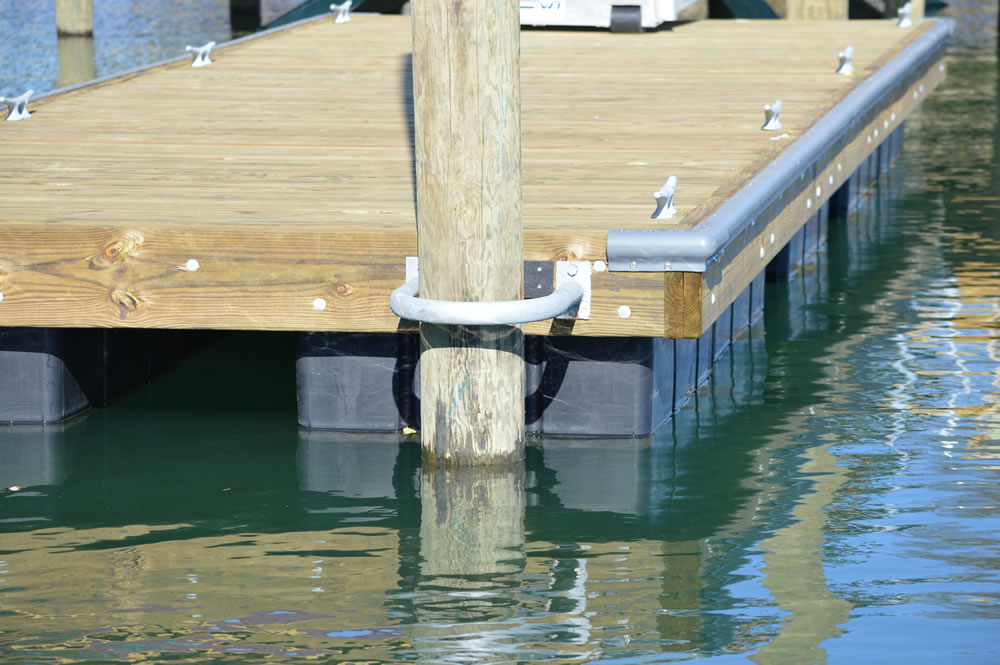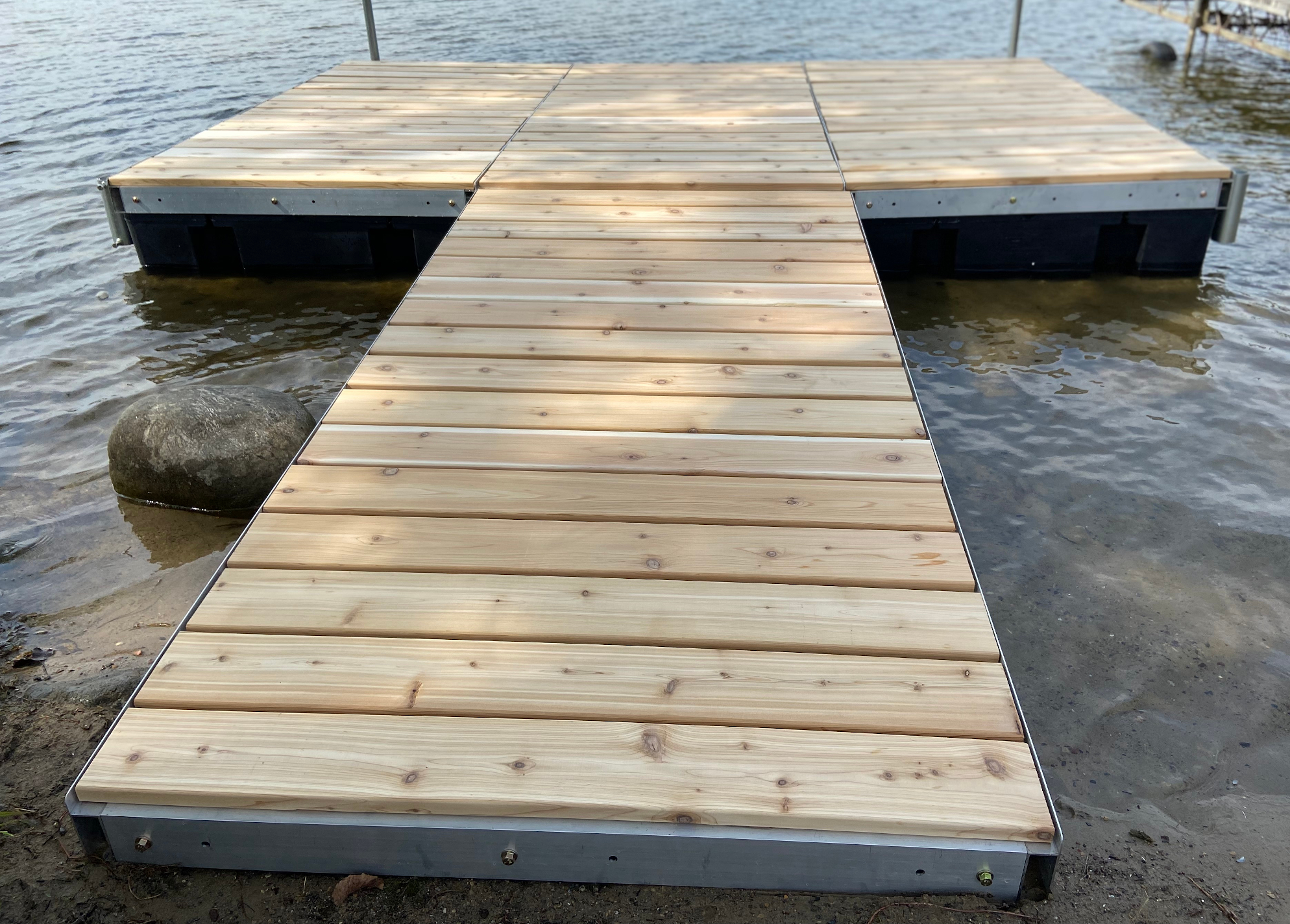Your Guide to Finding the most effective Dock Company for Top Quality and Integrity
Your Guide to Finding the most effective Dock Company for Top Quality and Integrity
Blog Article
Create the Perfect Docking Option With Floating Docks
Floating docks present a versatile remedy for a range of maritime requirements, adjusting flawlessly to varying water levels and varied vessel types. Their modular nature permits quick setup and relocation, yet the choice of appropriate materials and design features is important for making sure both capability and visual appeal. As we explore the necessary elements that add to the performance of floating docks, numerous crucial variables concerning stability and maintenance will arise, increasing concerns concerning just how to maximize your docking experience. The subsequent conversation will certainly light up these vital considerations.

Benefits of Floating Docks
Floating docks deal many benefits that make them a perfect selection for different maritime applications. Among the key benefits is their flexibility to changing water levels. Unlike fixed docks, floating docks fluctuate with the tide, making sure constant availability for vessels. This attribute is especially vital in locations vulnerable to substantial tidal changes or seasonal water degree adjustments.
Furthermore, floating docks are commonly much easier and quicker to set up contrasted to conventional set frameworks. Their modular design permits uncomplicated setting up and disassembly, facilitating upkeep and relocation when necessary. This adaptability is specifically valuable for momentary applications or in atmospheres where conditions may change.
Floating docks likewise tend to be much more eco-friendly, as they minimize disturbance to the seabed and surrounding aquatic ecosystems. Their buoyant nature decreases the danger of damage to marine life, advertising a much healthier setting. Moreover, these docks can be tailored to fit different vessel dimensions, guaranteeing that they fulfill particular operational needs - floating dock services.
Inevitably, the combination of flexibility, simplicity of installment, and environmental considerations makes floating docks a highly effective option for a wide variety of maritime requirements.
Choosing the Right Products
Selecting the suitable materials for floating docks is vital to guarantee sturdiness, longevity, and stability. The choice of materials straight impacts the dock's efficiency in numerous ecological problems, including direct exposure to water, sunshine, and prospective wear from aquatic web traffic.
Common products utilized for floating docks include aluminum, wood, and high-density polyethylene (HDPE) Aluminum is light-weight, corrosion-resistant, and needs marginal upkeep, making it an excellent choice for long life. However, its first cost can be higher contrasted to other products.
Wood, while visually enticing and providing a traditional look, can be prone to rot and bug damages otherwise appropriately treated. Therefore, making use of pressure-treated wood or normally durable types like cedar or redwood can mitigate these problems.
HDPE is a prominent choice because of its resistance to UV rays and chemicals, along with being eco friendly. floating dock services. It is readily available and lightweight in numerous shades, permitting for personalization
Inevitably, the right product choice will certainly rely on certain demands, including budget plan, desired looks, and ecological factors to consider. Mindful assessment of these elements will certainly cause a successful and resistant floating dock remedy.
Design Factors To Consider for Security
When making floating docks, making certain stability is a basic facet that can dramatically influence their functionality and safety and security. Security in floating dock style is influenced by numerous elements, consisting of buoyancy, weight distribution, and the arrangement of parts. An optimal buoyancy system need to use materials that offer enough lift while minimizing weight. This equilibrium guarantees that the dock remains above water, even under varying lots.
Weight distribution is vital; uniformly distributing loads throughout the dock prevents tilting and boosts security. Bigger styles can supply enhanced stability, especially in rough water problems, while longer docks might require additional supports to stop drooping.
Another More Info crucial factor to consider is the ecological impact, including wave activity and wind. Including attributes such as sidewalls or skirting can help mitigate the effects of environmental forces, maintaining stability in unfavorable problems. Inevitably, a mix of thoughtful style, product selection, and understanding of environmental elements will yield a drifting dock that fulfills both stability and safety and security needs.
Installment Tips and Techniques

Next, secure the needed licenses and stick to regional regulations, which may determine setup methods and environmental considerations. If needed, involve a qualified contractor experienced in floating dock installments. Use high-quality materials designed for aquatic settings to improve resilience and long life.
When placing the dock, align it parallel to the shoreline to help with simple accessibility. Make certain that the anchoring system is durable, employing cinder block or helical supports to maintain the dock against wind and wave action. It's critical to represent seasonal water level variations, consisting of potential ice activity in colder climates.
During the setup, double-check the dock's floatation and security prior to completing the anchoring. Frequently inspect the setup for any kind of indications of wear or damages. By adhering to these methods and pointers, you can achieve a safe and secure, useful, and aesthetically pleasing floating dock setup that fulfills your requirements.
Upkeep and Treatment Standards
Keeping and caring for floating docks is crucial to extending their lifespan and ensuring safe use. Routine evaluations should be performed to identify any indications of wear, damages, or aquatic development. Seek cracks, loosened fittings, or tarnished locations on the dock's surface area, as these issues can compromise architectural stability.
Cleansing is important. Make use of a pressure washing machine to remove algae, barnacles, and particles, which can accumulate in time. For persistent development, take into consideration eco pleasant cleaner that will not hurt marine life.
Furthermore, inspect the mooring lines and anchors regularly to guarantee they are protected and cost-free from deterioration. Replace any type of frayed or harmed lines immediately to preserve stability.
During severe weather condition, such as tornados or freezing conditions, take preventive steps. Protect the dock with extra mooring lines and, if practical, remove any type of detachable components to avoid damages.
Final Thought
In verdict, the execution of floating docks offers a reliable and versatile docking service suitable for various maritime applications. With correct installation and normal upkeep, floating docks Read Full Report can supply reliable and reliable docking experiences for a broad range of vessels.
As we explore the crucial elements that add to the effectiveness of floating docks, a number of vital factors relating to security and upkeep will certainly emerge, elevating inquiries regarding just how to maximize your docking experience. Unlike repaired docks, floating docks surge and fall with the tide, ensuring constant accessibility for vessels.When creating floating docks, ensuring security is an essential aspect that can dramatically affect their capability and safety. Stability in floating dock layout is affected by various factors, consisting of buoyancy, weight distribution, and the arrangement of parts. Inevitably, a mix of thoughtful style, product option, and understanding of environmental variables will produce a floating dock that fulfills both stability and safety demands.
Report this page